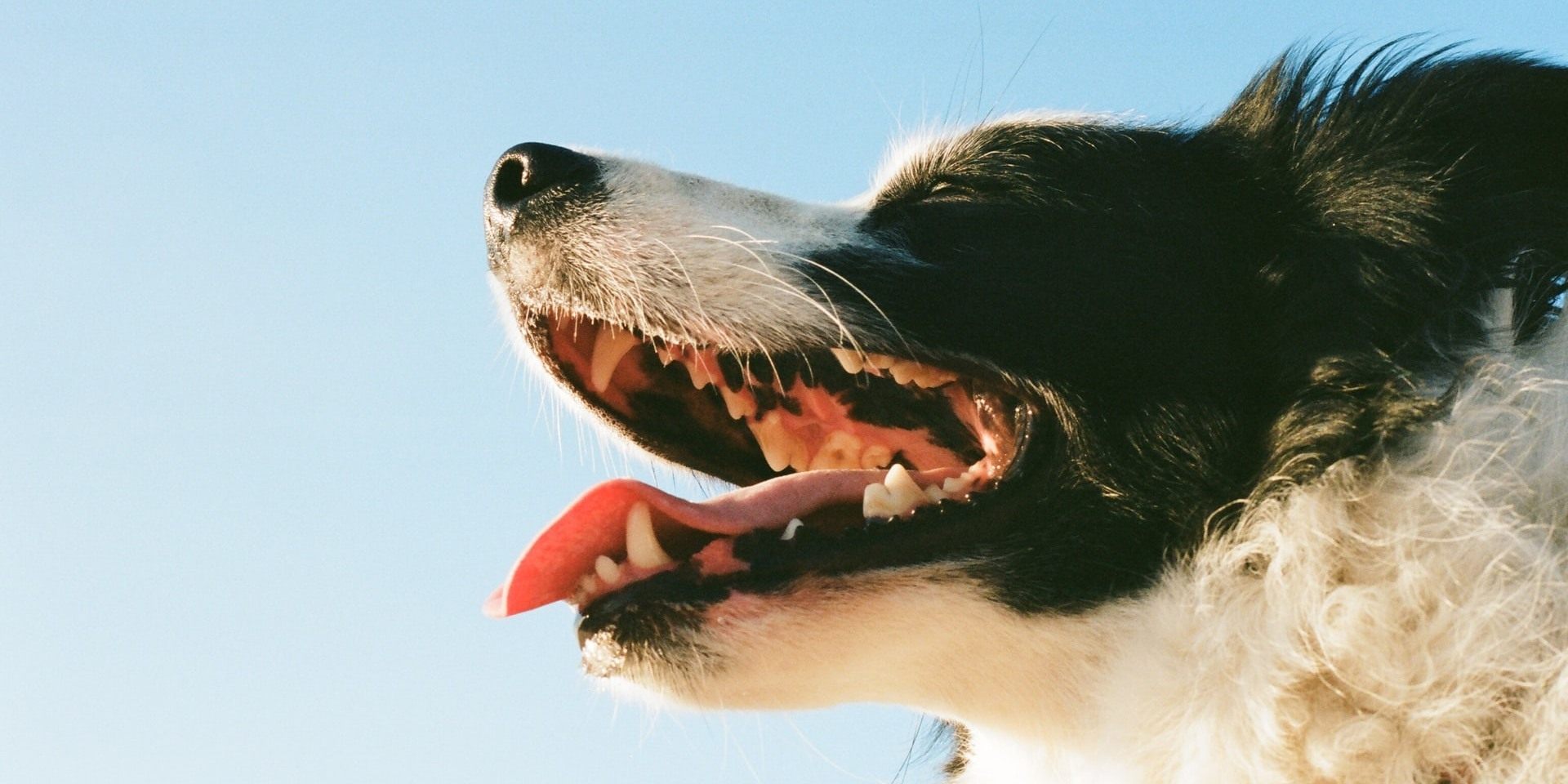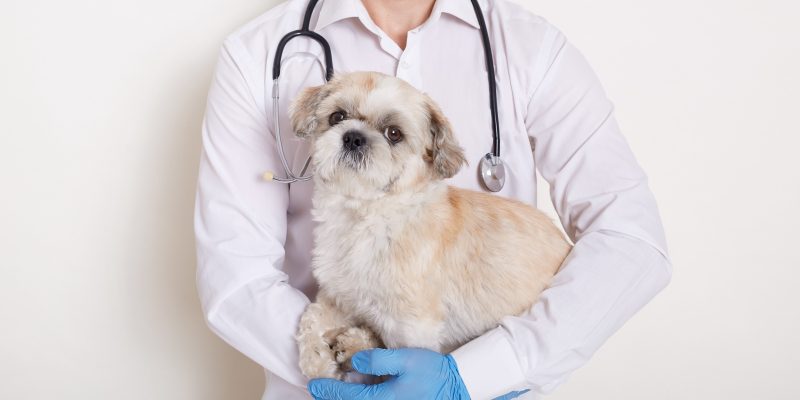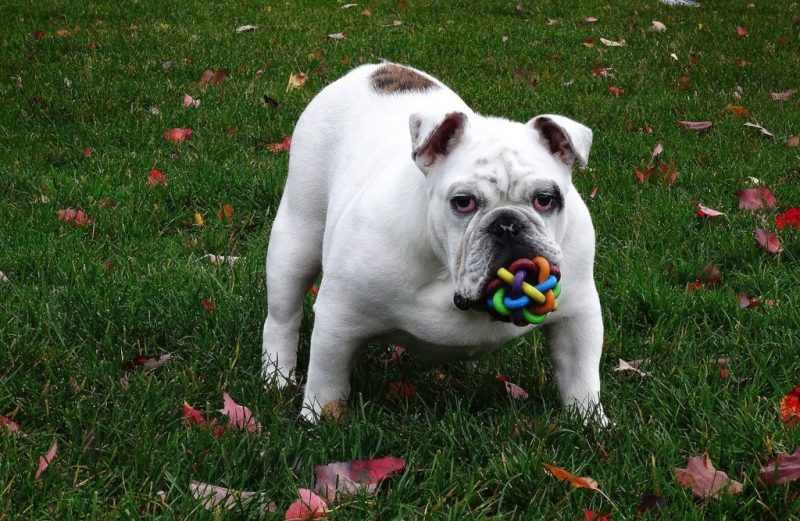Is Brushing Dog’s Teeth Necessary?
As it turns out, brushing dog’s teeth is really important. Like us, their teeth get dirty and if you don’t clean them they cause trouble. Over time all dogs can experience build ups of plague and tartar that if left alone will cause bad breath, gum disease, and painful tooth decay. Let things get bad enough and dirty teeth can become a very serious problem.
Tartar, as it turns out, is about 80 percent bacteria. Left unchecked it can not only damage teeth and gums, but it may also begin to attack the bone and ligaments that keep teeth in place. From there it could even enter the bloodstream and begin damaging organs.
So yes, you really should be brushing your dog’s teeth.
Don’t Bones Clean a Dog’s Teeth?
Bones can be good for (some) dogs and may minimise the risk of dental disease, but they’re not a replacement for brushing dog’s teeth. That’s the best way to remove plaque and tartar.
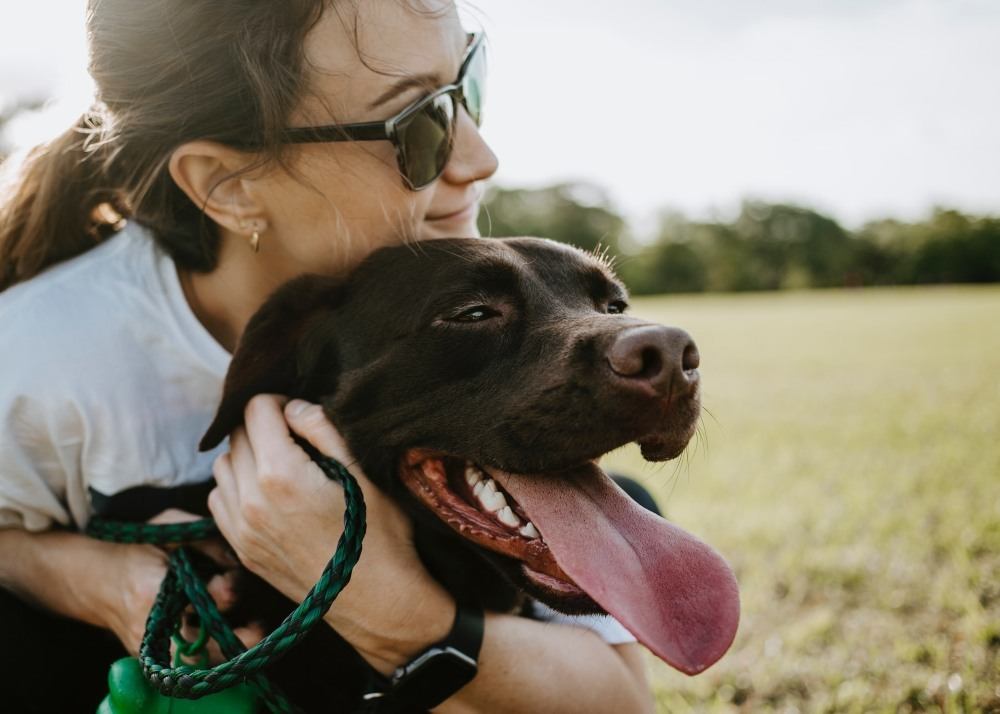
How Do You Actually Do It?
First thing: Brushing teeth can be a bit of a job, but if managed properly your dog will get used to it and may even come to enjoy the whole process. Before you start, make sure you have a dog toothbrush or, if they’re smaller, a finger brush. You will also need specialist dog toothpaste. NEVER use human toothpaste, bicarb, or other alternatives you might have in your bathroom cabinets–they can make animals sick. Also, the dog toothpastes come in flavours like chicken which they’ll appreciate and will help make everything much easier.
Start slow: Realistically it will take time to build up to a full clean. Begin by making sure they’re relaxed. If they’re in a particularly active or anxious mood you’re not going to get anywhere. Try to schedule a brush when they’re tired, like after a big walk or before bed.
When you’re ready, start by getting on their level. Sit in front or next to them. Don’t loom over, pin them, or take a position that could be seen as threatening.
Start by touching their mouth and gums with your hands to help them get used to the sensation. If they’re ok with that, put some toothpaste on your finger and let them taste it. That might be all you do for the first few sessions, that’s fine. It’s still creating a positive association for them.
Brushing: Once you’re sure they’re fine with the paste and having their mouth prodded you can introduce the brush. Angle it against their teeth and begin massaging the gum line to remove plaque. Move along the teeth in a circular motion. The goal is to build up to being able to brush for two minutes and work along to also brush their back teeth. Again, this might take time.
When you’re done: Make sure you reward them with attention, play, toys, and cuddles. Ideally they’ll come to think of this as a nice activity where they get to spend time with you. If this gentle brushing causes bleeding there could already be gum disease so it’s worth chatting to the vet. For a more detailed breakdown of how to introduce them to brushing check out Greencross Vets’ week plan.
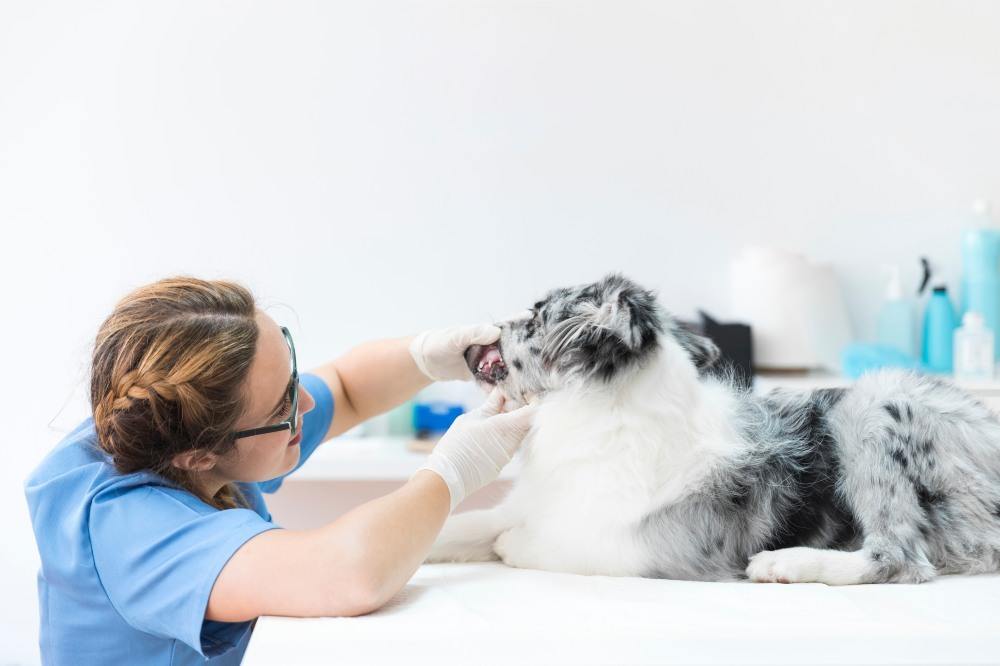
How Often Should You Be Brushing Dog’s Teeth?
Ideally you’d be brushing their teeth daily, but that’s obviously easier said than done. Frequency can also depend on your pet, their breed, age, diet, and past dental history. Your vet can give you a sense of what’s right for them, but three times a week is a good goal to start with.
It’s important to be consistent with brushing to let your pet get used to it. So better to regularly do it a few times a week, than sporadically go through phases of constant brushing and then lose interest.
Also, it’s worth still investing in annual professional cleanings. Yes, it’s an expense, but it could save you in the long term by reducing the likelihood of expensive (and stressful) dental procedures.
Other Things You Can Do to Look after Teeth
As mentioned, regular check ups, cleans, and bones are all good ways to keep your dog’s teeth in good condition. You can also supplement cleans with dental treats and chew toys designed with healthy teeth in mind.
Catch up on more confusing health issues:
Dog Anti-vaxxers and the Confusion Around Inoculations
Is Pet Insurance Worth the Money?
A Deep Dive into Dog Smell, the Greatest Pet Mystery
While you’re here, subscribe to our newsletter, check out our magazine, and follow us on Instagram, Facebook, and Twitter.

